Visit us
Based on the emergency ordinance that was releasedat the end of september, after the government issued new Corona measures, the mayor of Eindhoven has decided to cancel all planned events surrounding the live version of DDW. This means the festival can only take place virtually this year. Please check this page for our online activities and visit our DDW-platform: ArtEZ Dutch Design Week 2020
DDW20
What does this changing intimate relationship mean for the way we would like or are forced to engage with each other? Can our engagement or collaboration be empowered by deleting physical boarders in a global virtual/online space? But also, how do you deal with loneliness and how do we relate to each other and our environment, both directly and indirectly in this new situation of social distancing?
Art education as well as art research are being challenged to formulate a response to a society that is haphazardly changing under the current societal challenges. Design students, teachers and researchers of ArtEZ deal with these questions by addressing and visualizing the many challenges and try to develop, for example, new objects, vocabularies, strategies, tools and future scenarios to respond to these challenges and make another kind of future. During the Dutch Design Week 2020 (DDW20) we present The New Intimacy with: Centre of Expertise Future Makers, Professorship Tactical Design, Professorship Fashion, Professorship Art education as Critical Tactics, ArtEZ Bachelor Product Design, ArtEZ Bachelor Interior Architecture and Master Interior Architecture.
Podcasts DDW20
 On October 22 there will be some live interviews about the ArtEZ project Going Circular Going Cellulose. These interviews will be recorded. Keep an eye on this page for the link to the podcasts of these interviews!
On October 22 there will be some live interviews about the ArtEZ project Going Circular Going Cellulose. These interviews will be recorded. Keep an eye on this page for the link to the podcasts of these interviews!
Projects ArtEZ DDW20
ArtEZ aims to train future artists as change makers with societal impact. The focus is on the STEAM touch stones, i.e. changes that relate to Social, Technological, Embodied, Affective and Material aspects in society. ArtEZ tries to shape critical and reflective individuals for a rapidly changing, globalizing world in which they question preferable futures. Arts provides the space for a critical framework that enables sustainable change. Artistic creativity, innovation and the responsibility to facilitate interaction are their key tools.
Research at ArtEZ gives direction to these changes by speculating on and exploring alternative and desirable futures on the basis of these touch stones, not only to think them through theoretically, but above all to make them experiential to a certain extent. The various research projects aim to contribute to building resilient futures, equitable societies and critical diversity.
The ArtEZ presentation at the DDW20 shows some results of our education and research programme which are related to the changing intimate relationships between bodies, objects and spaces. Relationships that may make people vulnerable or might empower them. Are you curious? Take a look at out projects:


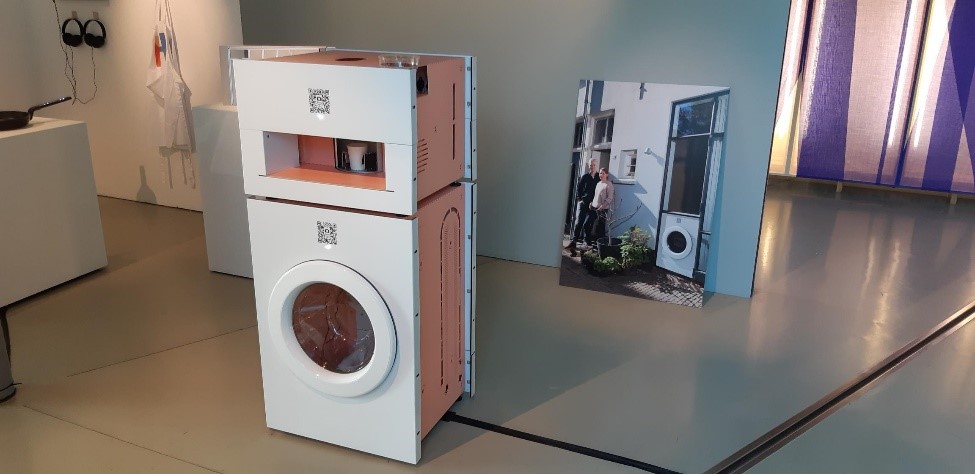 Frank Kolkman is an experimental designer who aims to challenge our understanding of current and near-future technologies and their sociopolicitical implications. For this project Kolkman researched ownership, employment and precarity in the sharing economy after finding that millennials are increasingly counting on Airbnb income to help pay for their first homes or on Uber to finance their cars.
Frank Kolkman is an experimental designer who aims to challenge our understanding of current and near-future technologies and their sociopolicitical implications. For this project Kolkman researched ownership, employment and precarity in the sharing economy after finding that millennials are increasingly counting on Airbnb income to help pay for their first homes or on Uber to finance their cars.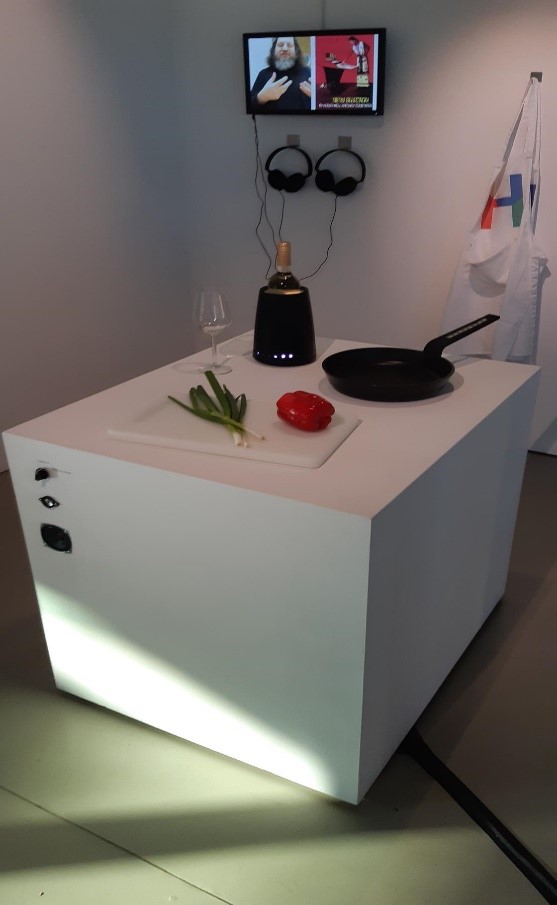 Klasien van de Zandschulp is an interaction designer who readdressed Bauhaus’ functional and analytical design methods for the precarious citizen. Van de Zandschulp started her research with the question: to what extent are we precarious when we are online?
Klasien van de Zandschulp is an interaction designer who readdressed Bauhaus’ functional and analytical design methods for the precarious citizen. Van de Zandschulp started her research with the question: to what extent are we precarious when we are online?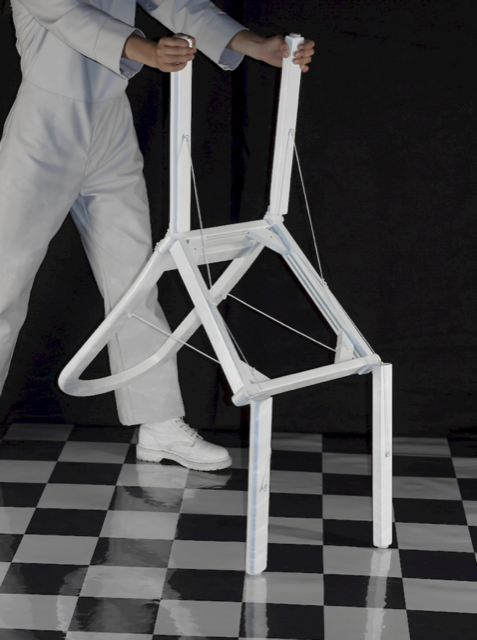 Living in times of acceleration, control and connection, the principles and conditions of relationships are tested in most fundamental ways. The Anti Chair Movement is proposing to establish the rules of connection and intimacy in new ways. By liberating the object of its proposed function, The Anti Chair Movement strives to challenge how we engage with the objects and spaces around us. Shifting away from control and speed, towards a space for participation and resonance by inviting a new form of engagement. As equals in one space, learning to engage again. What relationships can immerse from a new form of engagement and how will it influence how we live with the objects and spaces surrounding us?
Living in times of acceleration, control and connection, the principles and conditions of relationships are tested in most fundamental ways. The Anti Chair Movement is proposing to establish the rules of connection and intimacy in new ways. By liberating the object of its proposed function, The Anti Chair Movement strives to challenge how we engage with the objects and spaces around us. Shifting away from control and speed, towards a space for participation and resonance by inviting a new form of engagement. As equals in one space, learning to engage again. What relationships can immerse from a new form of engagement and how will it influence how we live with the objects and spaces surrounding us?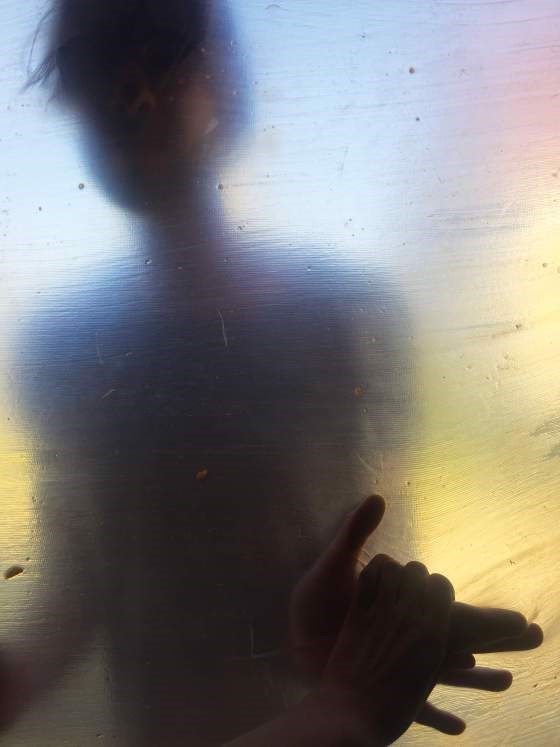
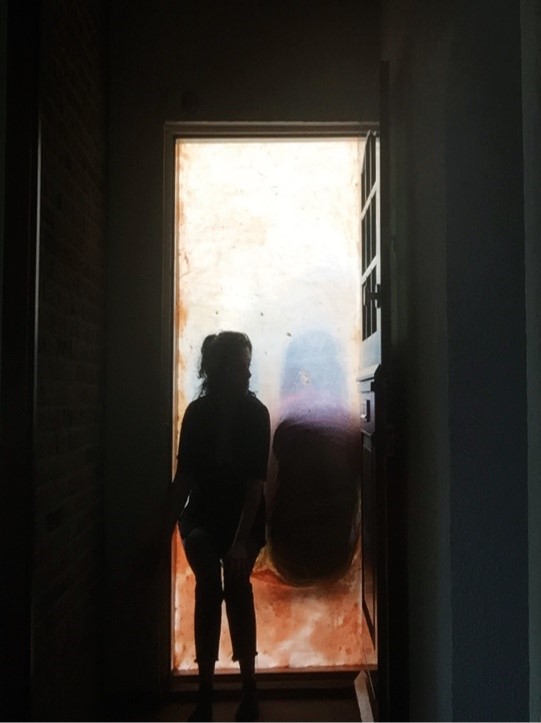 During COVID-19, proximity seems far away. Recorded routes take control of our movement through space. Plexiglass and screens feel cold. Alumni Eva Visch noticed that contact in the form of only seeing and hearing was not enough. One wants to feel the warmth and movement of the other.
During COVID-19, proximity seems far away. Recorded routes take control of our movement through space. Plexiglass and screens feel cold. Alumni Eva Visch noticed that contact in the form of only seeing and hearing was not enough. One wants to feel the warmth and movement of the other. Application of traditional construction method in post-disaster shelter In 2018 Hualien Earthquake, sturdy buildings we believed in crumbled down. This shocking fact became Shen’s motivation to research traditional Taiwanese indigenous architecture. In the process of research, she found that they used simple and easy-to-learn construction methods to create sturdy buildings. Due to limited technology, none of these indigenous buildings used adhesives. As a result, on the one hand, flexible intersection without adhesives creates resilience for the house. On the other, it also becomes a sustainable building method. Building materials are undamaged by nail and glue, thus they could stay intact and be reused when buildings are demolished. In the further process, she wants to apply this method to post-disaster reconstruction. In a post-disaster state where everything is destroyed and disorderly, how can we continue the lifespan of the material? And what value could we create in this scenario? Shen intends to construct a temporary shelter by a traditional building method and the remains of our home. The process of reconstruct a shelter, it is also a reconstruct treatment for our memory. Furthermore, the completeness of materials is preserved by this method, thus the wreckages could be used in the permanent housing rather than be transported into landfill.
Application of traditional construction method in post-disaster shelter In 2018 Hualien Earthquake, sturdy buildings we believed in crumbled down. This shocking fact became Shen’s motivation to research traditional Taiwanese indigenous architecture. In the process of research, she found that they used simple and easy-to-learn construction methods to create sturdy buildings. Due to limited technology, none of these indigenous buildings used adhesives. As a result, on the one hand, flexible intersection without adhesives creates resilience for the house. On the other, it also becomes a sustainable building method. Building materials are undamaged by nail and glue, thus they could stay intact and be reused when buildings are demolished. In the further process, she wants to apply this method to post-disaster reconstruction. In a post-disaster state where everything is destroyed and disorderly, how can we continue the lifespan of the material? And what value could we create in this scenario? Shen intends to construct a temporary shelter by a traditional building method and the remains of our home. The process of reconstruct a shelter, it is also a reconstruct treatment for our memory. Furthermore, the completeness of materials is preserved by this method, thus the wreckages could be used in the permanent housing rather than be transported into landfill.